Marco Siffredi was a French snowboarder and mountaineer who had climbed Mount Everest before. But his determination to find the "Holy Grail" of routes proved to be his undoing.
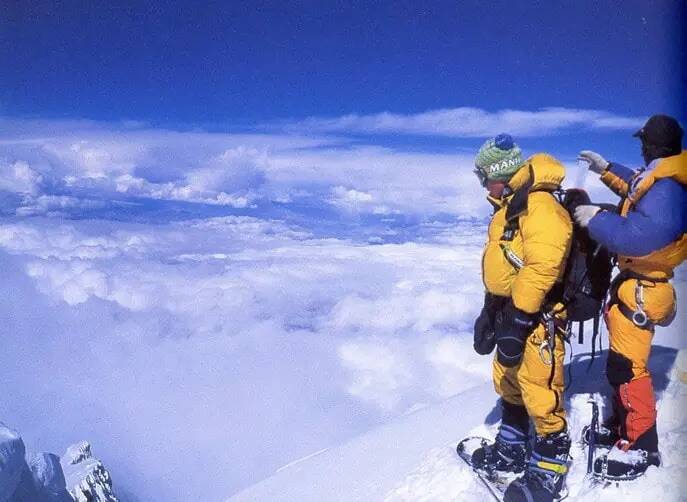
Antoine ChandelierThe last photo ever taken of Marco Siffredi before he disappeared on September 8, 2002.
Ever since British explorer George Mallory attempted to climb Mount Everest in 1924 and tragically perished on its slopes, over 4,000 people have tried to follow in his footsteps. Many have been successful, but hundreds of them have met a terrible fate like Mallory, succumbing to the incredibly harsh conditions that exist on the world’s tallest mountain.
But while more than 300 people have died either ascending or descending Mount Everest, only one has disappeared while descending the slopes on a snowboard. His name was Marco Siffredi, and he was a French daredevil who had made several skiing and snowboarding descents in the Chamonix valley in the late 1990s before setting his sights on the mountains of Peru.
After several impressive descents, including the first-ever descent of the Nant Blanc on the Aiguille Verte by snowboard, Siffredi decided to tackle the ultimate challenge: snowboarding down Mount Everest. Siffredi’s first descent in 2001 wasn’t without a hitch, but he managed to make it down in just about two hours. But when he made another descent the next year, despite Sherpas warning him about the weather, he was never seen again.
To this day, Marco Siffredi’s body has never been found. Of course, he’s widely presumed to be dead, as it’s hard to imagine he survived that last trip down Everest. Still, no one knows for sure what exactly happened to him.
Marco Siffredi, A World-Class Daredevil
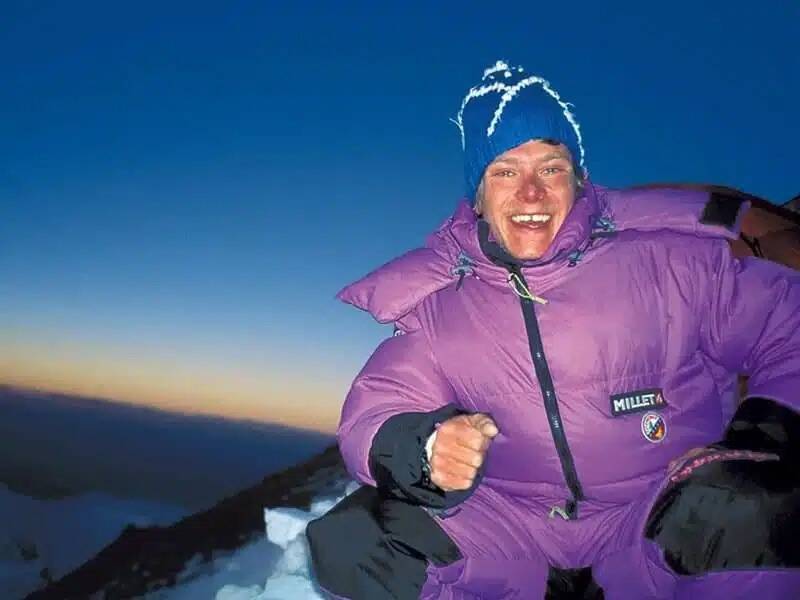
Marco SiffrediMarco Siffredi at Camp 3 during his first Mount Everest ascent.
Born in Chamonix, France on May 22, 1979, Marco Siffredi was destined to climb mountains. His father was a mountain guide, and that passion carried over to Marco and his brother Pierre. Sadly, however, tragic fates would befall both of the Siffredi boys. Pierre died in an avalanche while climbing the mountains of Chamonix — years before Marco vanished on Everest.
But while he was growing up, Marco Siffredi’s passion for skiing and snowboarding was clear as day. His drive has been compared to that of Alex Honnold, the rock climber at the heart of the documentary Free Solo, and Siffredi was well regarded both professionally and personally.
As professional snowboarder Jeremy Jones told Jeremy Evans, the author of a book about Marco Siffredi, titled See You Tomorrow, Siffredi “was a young punk rock kid going and tagging the most serious lines in the Chamonix valley and doing it real freeride style… full on bombing lines that traditionally people were hop turning down. Nobody was doing that yet. If he was alive today, he would be this huge name in snowboarding.”
In May 1996, Siffredi took on an intricate route on the North Face of the Aiguille du Midi known as the Mallory — just one year after he mastered snowboarding. Then, toward the end of the season that year, he also successfully completed the first snowboard descent of the Chardonnet.
In June 1999, Siffredi returned to Chamonix and became the second person to descend the Nant Blanc on Aiguille Verte, which had been unconquered since Jean-Marc Boivin descended it a decade prior. It was this descent that cemented Siffredi as a force to be reckoned with in the snowboarding world — and which fueled his desire to take on more extreme descents.
Marco Siffredi’s Passion Drives Him To Take On Mount Everest
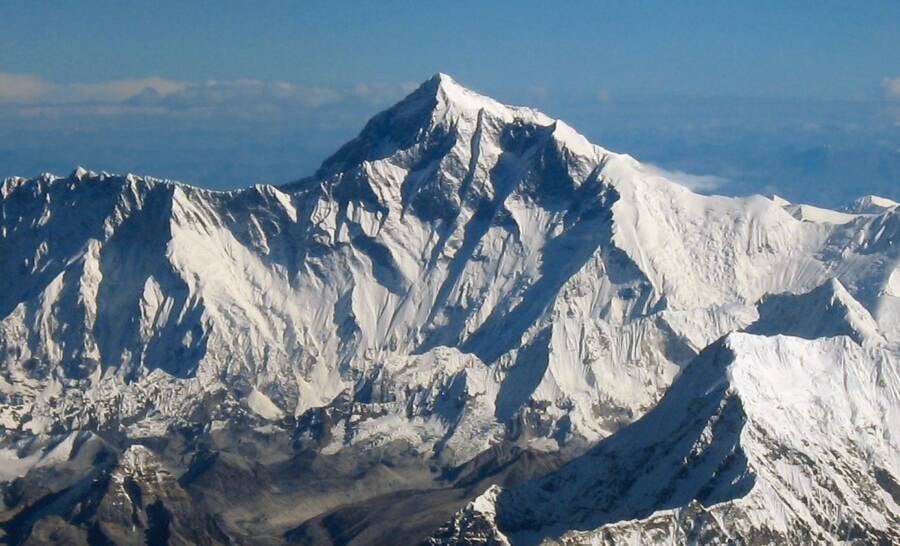
Wikimedia CommonsMount Everest stands at a towering 29,032 feet.
It was a September day in 2002 when Marco Siffredi reached the top of Mount Everest, standing roughly 29,000 feet above sea level. Far above the clouds, the 23-year-old French snowboarder and mountaineer reveled in the success of his second attempt to summit the mountain.
The previous spring in May 2001, he had climbed the peak for the first time on a mission to find the “Holy Grail” of snowboarding routes: the deadly Hornbein Couloir on the mountain’s northern face. Unfortunately, he had been forced to choose a different route — the Norton Couloir — as the Hornbein didn’t have enough snow covering it. It was the first time anyone had snowboarded down Everest, but for Siffredi, it wouldn’t be the last.
Now, on September 8, 2002, he was back to try again.
Though it was a little late in the year for climbing, Siffredi was undeterred. After all, climbing up the mountain wasn’t the goal for him; snowboarding down it was, and in the fall, the extra snow would be better for his descent.
However, the snow was also deep. On the morning of September 8th, Marco Siffredi and the three Sherpas accompanying him plowed through chest-deep snow to reach the summit. Though it took them 12 and a half hours in the infamous Death Zone, Siffredi was still determined to complete the other part of his journey — snowboarding down the Hornbein Couloir.
This is what he came here for.
The Tragic, Final Descent Down Mount Everest
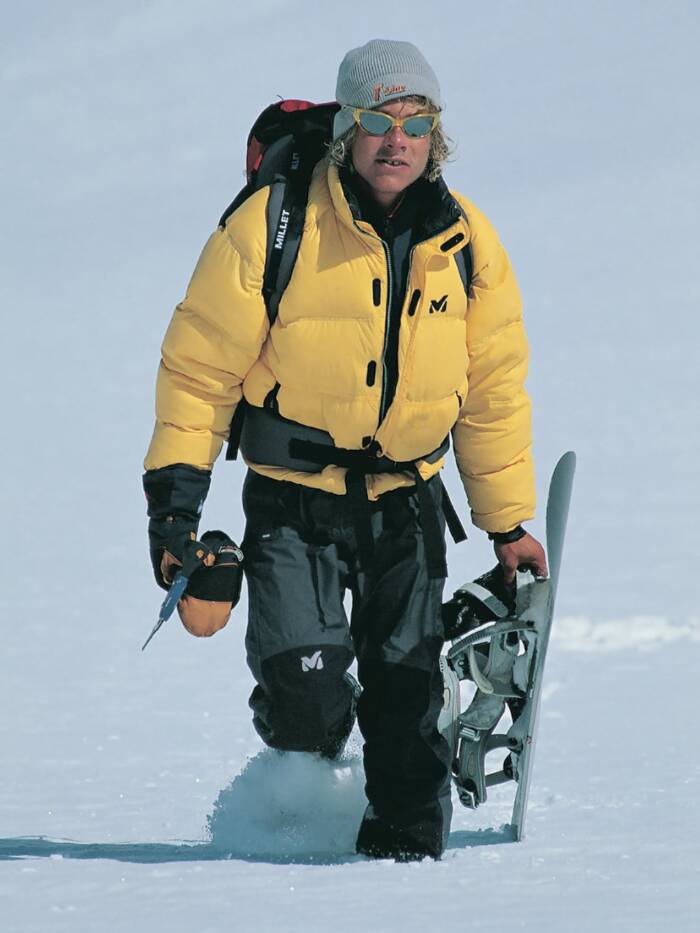
René RobertMarco Siffredi’s nickname was “l’Ange Blond” (The Blond Angel).
However, by the time Marco Siffredi had rested and organized himself for the descent around 3 p.m., clouds had begun to gather below them. The Sherpas warned Siffredi that the late hour and the unfavorable weather conditions were a dangerous combination, and suggested that it would be better not to snowboard down the mountain after all.
But Siffredi was fully intent on snowboarding, as he had been for the past year and a half. This was his chance, and he was going to take it.
Begrudgingly, the Sherpas watched him go, gliding down the mountain to their left, and eventually disappearing down the Hornbein Couloir.
As Siffredi vanished into the clouds, the Sherpas hurried to descend the summit, anxious to beat any bad weather. By the time they were gathering gear at Camp 3, they were able to see the mountain paths below them.
To their surprise, at the North Col, about 4,000 feet below them, they saw a lone figure perched on the slopes. They all saw him stand up and slide silently down the mountain. The Sherpas maintain that they were 100 percent certain that no one else was on the mountain with them, but all three were confident they saw the same man snowboarding down.
However, when they arrived at the place where they saw him, the snow was smooth, with no tracks. Instantly, the Sherpas feared the worst: The man they’d seen had been an apparition, and Siffredi was dead.
After they descended, their fears were confirmed. Siffredi had not returned from his snowboarding trip, and his body hadn’t been seen by anyone.
What Happened To Marco Siffredi?
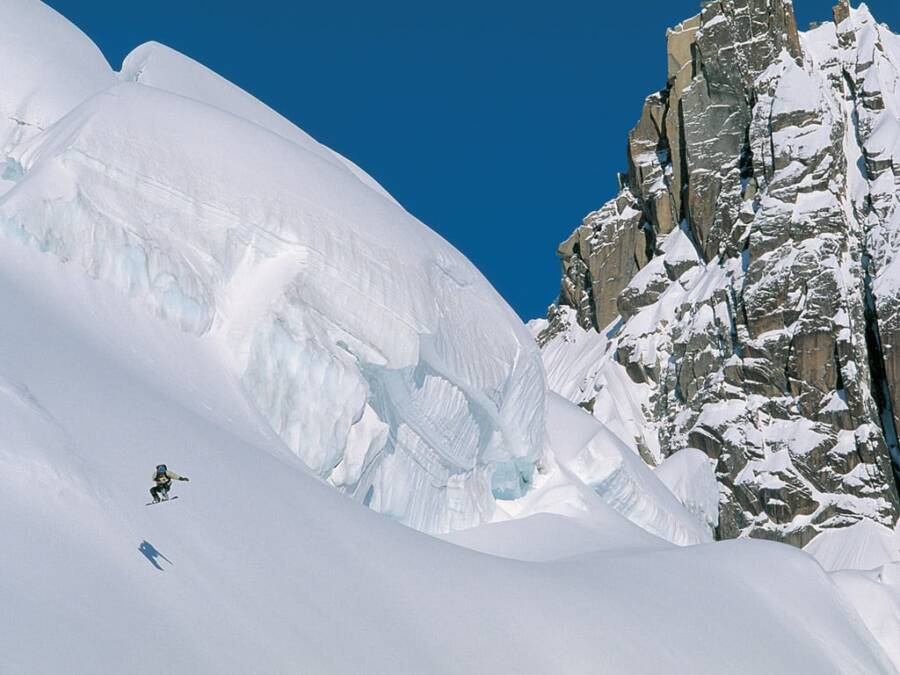
René RobertMarco Siffredi snowboarding in Chamonix.
Though many have died on Mount Everest, their deaths have typically happened on or near well-trafficked summit routes, meaning most bodies on Everest don’t vanish. The fact that Marco Siffredi’s body did makes his demise especially eerie, along with the rumors that surround his death.
As for the most convincing theory about his fate, Everest experts believe that he was simply a victim of the summit’s unforgiving conditions.
The thin air and the low temperatures, combined with the fact that he was exhausted from his over-12-hour climb, could have resulted in him collapsing before he finished his descent. If he did, it was likely that he never got up again, or that he tumbled into one of the mountain’s many ravines.
Other climbers have said that he could have been a victim of an avalanche.
As the dark clouds signaled, a storm was brewing as Siffredi glided down the slopes. The storm could have led to an avalanche, sweeping him off the face of the mountain and burying him. As the mountain’s peaks are so vast and high, it’s possible an avalanche could have gone unnoticed by the Sherpas.
Perhaps the oddest theory surrounding his disappearance comes from Marco Siffredi’s sister, Shooty. Shooty believes that her brother made it down the mountain safely, and is still alive today. She claims that he simply passed by the base camp, and is living with yak herders in Tibet, exploring new peaks, and scaling little-known parts of the Tibetan mountain ranges.
After learning about Marco Siffredi, the snowboarder who vanished on Mount Everest, discover the story of Tenzing Norgay, the “unsung hero” of the first successful summit of Everest. Then, read about Beck Weathers, the man who miraculously survived on Everest after he was left for dead.





